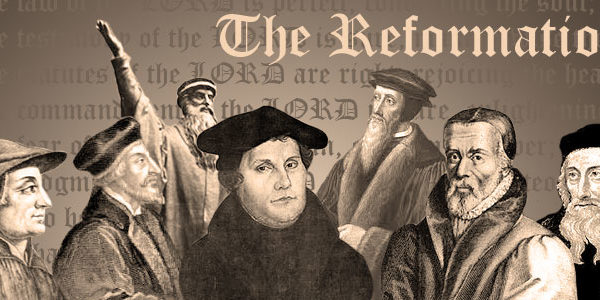
Guess Who? Reformers Edition (Timothy Raymond)
One of the games my kids love playing is Guess Who? If you’re not familiar with Guess Who?, you select an identity from a couple dozen predetermined cards, which you hide from your opponent. Then you ask specific questions of one another until you’ve identified the identity of your opponent. It’s quite a fun game which I highly recommend.
Well, today I’d like to do something similar with one particular Reformer who, while hugely influential in the 16th century, is shockingly unknown today. This will be a good test of your knowledge of Reformation history. Think through the following statements and ask yourself, Which Reformer fits all of the descriptions below?
-
He was the illegitimate son of a Catholic priest who converted to Reformed Christianity in his late teens after reading Luther’s works.
-
While in his early twenties, he was hired to teach the Bible in a Roman Catholic monastery; in a fairly brief period of time all the monks converted to the Reformed Faith, several became Protestant pastors, and the monastery disbanded.
-
His wife’s name was Anna and together they eventually raised eleven children (all of whom lived to maturity, which was shocking on those days); three of their children they adopted because they had been orphaned by the black plague.

-
All six of his sons went on to become pastors, and one of his adopted sons actually replaced him as the senior pastor of his church after his death.
-
He served as a formative theological mentor to Calvin, Beza, Jewel, and Ursinus.
-
His major theological work, while similar in size and scope to Calvin’s Institutes, was far more widely read and influential in the 16th century than The Institutes.
-
He wrote commentaries on the entire New Testament and several Old Testament books; his commentary on Revelation became wildly popular.
-
His personal statement of faith, which he wrote because he believed he was about to die of the black death, went on to become a major Reformed Confession and became the second most widely influential Protestant Confession, second only to the Heidelberg Catechism.
-
The most famous sentence he ever wrote is probably, “The preaching of the word of God is the word of God.”
-
His life was characterized by unusual kindness, self-restraint, and holiness and was not given to the fits of rhetorical rage which so often marked both Luther and Calvin; in fact, this man frequently admonished Calvin to be less harsh in his demeanor and writings.
-
He corresponded with all the major 16th century Reformers including Calvin, Luther, Bucer, Zwingli, Cranmer, Melanchthon, and Beza.
-
His total surviving letters outnumber those of Calvin, Luther, and Zwingli combined.
-
He wrote over 100 books and preached approximately 7,000 sermons in his lifetime.
-
His theological and spiritual influence over England and Europe was so great that he was known as “The Shepherd of the Churches” (i.e., “the pastor of pastors”) in his lifetime.
-
Due to an odd series historical and political circumstances, his name and reputation were intentionally buried in the sands of time so that hardly any of his books remain in print in English today and his name is almost completely unknown.
Can you identify these mysterious Reformers?
 Timothy Raymond is an editor for Credo Magazine and has been the pastor of Trinity Baptist Church in Muncie, Indiana since April 2006. He received his MDiv from the Baptist Bible Seminary of Pennsylvania in 2004 and has pursued further education through the Christian Counseling and Educational Foundation.
Timothy Raymond is an editor for Credo Magazine and has been the pastor of Trinity Baptist Church in Muncie, Indiana since April 2006. He received his MDiv from the Baptist Bible Seminary of Pennsylvania in 2004 and has pursued further education through the Christian Counseling and Educational Foundation.
